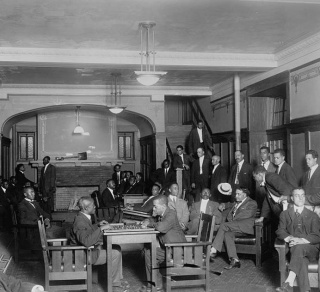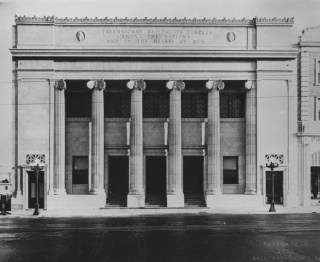Education | Timeline |
- 1829
- 1834
- 1840s
- 1848
- 1853
- 1859
- 1870
- 1870s
- 1871
- 1875
- 1877
- 1879
- 1880s
- 1882
- 1883
- 1884
- 1886
- 1887
- 1889
- 1890s
- 1891
- 1892
- 1893
- 1894
- 1895
- 1898
- 1899
- 1900
- 1900s
- 1901
- 1902
- 1904
- 1905
- 1906
- 1908
- 1909
- 1910
- 1910s
- 1911
- 1912
- 1913
- 1914
- 1915
- 1916
- 1917
- 1918
- 1919
- 1920
- 1920s
- 1921
- 1922
- 1923
- 1924
- 1925
- 1926
- 1927
- 1928
- 1929
- 1930s
- 1930
- 1931
- 1933
- 1934
- 1935
- 1936
- 1937
- 1938
- 1939
- 1940s
- 1940
- 1941
- 1942
- 1943
- 1944
- 1945
- 1946
- 1947
- 1948
- 1949
- 1950s
- 1950
- 1951
- 1952
- 1953
- 1954
- 1955
- 1956
- 1957
- 1958
- 1959
- 1960s
- 1960
- 1961
- 1962
- 1963
- 1964
- 1965
- 1966
- 1967
- 1968
- 1969
- 1970s
- 1970
- 1971
- 1972
- 1973
- 1974
- 1976
- 1979
- 1980
- 1992
Early commissions for wealthy clients
Flintridge, named for and developed by Senator Frank Putnam Flint, is a wealthy, segregated suburb near Pasadena. Williams designs scores of homes in this upscale community including this house for Katherine Flint, the Senator's widow. (It is a smaller version of the couple's original residence.) In later interviews Williams remembers his professional relationship with the Senator,"I got my start doing better homes ... from him." (Los Angeles Times. Octoiber 11, 1970) Eventually he designs at least 10 spec homes in the Flintridge area and "the development has one of the greatest concentrations of Paul Williams' houses" in the region. (Personal communications, Tim Gregory, noted regional architectural historian, 2013)
The Louis Cass residence in Flintridge is typically described as Williams' first significant residential project for a wealthy white client. His biographies link the two men as high school classmates, but current research does not support this. Williams attended Polytechic High School and graduated in 1912. Cass was an athletic star at Los Angeles High School according to local newspaper accounts. After two years at Stanford University, he was named captain of the football team. (Los Angeles Times, November 27, 1911 and August 8, 1913) Cass becomes a successful insurance executive and is one of the founders of the Automobile Club of Southern California. In 1954 Williams designs a ranch house for Cass and his wife Virginia in Temecula, California.
Despite warnings that the African American community is not large or wealthy enough to support an architect, Williams finds work in this growing segment of society. After acquiring his architectural license, he begins to make important connections including African American businessman Louis M. Blodgett. Blodgett, a Los Angeles entreprenuer with interests in construction, real estate, insurance and the funeral industry, hires the young architect to design a home in 1922 (and later in 1953). In 1924 Williams designs the Second Baptist Church—one of the first major construction projects in the Central Ave area of Los Angeles.
Hollywood Masonic Temple, Los Angeles
The Neoclassical-style Masonic Temple in Hollywood is built in 1922. One of the first substantial structures built along the sparsely developed Hollywood Boulevard, the building is described as "unsurpassed for beauty, attractiveness and richness of equipment." Designed by John C. Austin, one of the most important California architects of the 20th century, the Temple includes a billiard room, pipe organ, ladies' parlor, ballroom, and meeting rooms. Austin's custom interiors feature oak furniture upholstered in Spanish leather, adorned with the symbols of the Masonic Order.
English-born Austin moves to Los Angeles in 1894 and becomes one of the city's architectural and civic leaders. He hires many "embryo architects" encouraging them to perfect their professional skills. Paul Revere Williams works in Austin's firm from 1921-1924 advancing to the position of Head Draftsman. Historians believe Williams participates in some aspect of the design for the Hollywood Masonic Temple.
In 1985 the Masonic Temple is named to the Register of Historic Places by the National Park Service.







